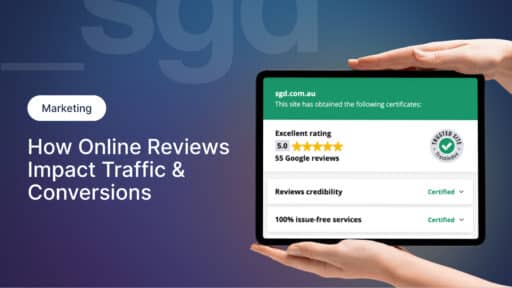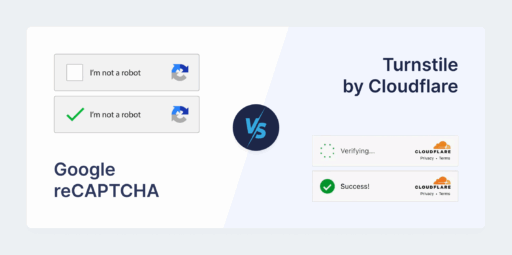How to Plan Your Next Website Project– Setting goals, Timelines, and Budgets for a Successful Build
March 31, 2025 — SGD Team

A website project is one of the most exciting (and often overwhelming) parts of running a modern business.
Whether you’re launching your first site or giving your current one a long-overdue upgrade, how you plan will shape everything that follows— the time it takes, the money you spend, and most importantly, the results you get.
A well-planned website can be one of your most powerful business assets.
It’s your digital shopfront, salesperson, and customer service rep all rolled into one— available 24/7 to attract and convert your ideal customers.
But if you jump in without a clear plan, you risk ending up with a website that looks good but doesn’t do much for your business.
The good news?
You don’t need to be a web expert to plan a great website project.
You just need a simple, practical roadmap— like the one below.
Step 1: Get Clear on Why You’re Doing This
Before you do anything, ask: What is the website actually for?
Be specific:
- Generate leads or enquiries?
- Sell products online?
- Build authority and trust?
- Support existing customers?
- Launch a new service?
Also think about secondary goals— the supporting outcomes that would be nice to achieve alongside your main goal.
An example
For a builder, the primary goal might be generating qualified enquiries, while a secondary goal might be showcasing past projects to build trust.
Why it matters
Every design, content, and technical decision flows from this. If you don’t know what you want your site to do, it won’t do much at all.
A tip from SGD
A goal like “we need a better website” isn’t enough. Link it directly to a business result— e.g., “we want 30% more qualified leads within 6 months.”
Step 2: Know Your Audience (and Competitors)
Your website isn’t for you— it’s for your ideal customers.
To get this right, answer:
- Who exactly is visiting your site?
- What do they care about?
- What problems are they trying to solve?
- What annoys them about competitor websites?
And don’t forget to look sideways:
- What are your competitors doing well?
- Where are they letting people down?
Sample case
A law firm working with individuals may need easy-to-read explanations and clear paths to book a consult— not complex, jargon-heavy pages that only other lawyers would understand.
Why does it matter?
Websites that are too focused on the business and not the user will confuse visitors, not convert them.
SGD advice
Build 2-3 simple client personas. Name them, describe their goals and frustrations, and keep them in front of you during the entire project.
Step 3: List Your Must-Haves and Nice-to-Haves
This step is crucial. It’s where scope creep is avoided, and your budget stays under control.
Split your wishlist into two:
Must-Haves
These are essential for launch:
- Mobile-friendly design
- Home, About, Services, Contact pages
- Contact form
- Blog or news section (if used)
- Google Maps integration
- Basic SEO setup
- Fast page load times
- Clear Calls to Action (CTAs)
Nice-to-Haves
Extras you’d love but don’t need on day one:
- Online bookings
- Client portal
- Live chat
- Video backgrounds
- Interactive tools (e.g., pricing calculators)
- Advanced SEO, content marketing, or lead magnets
For example
A physiotherapy clinic might need appointment bookings (must-have) but might hold off on a client resource hub (nice-to-have) for a future update.
Why it matters
Deciding early prevents delays and helps your web agency recommend the best way to prioritise features without blowing the budget.
SGD tip
Ask: “Will this help a visitor take the action I want them to take?” If not, it’s probably a nice-to-have.
Step 4: Set a Realistic Budget
Budget conversations are tricky, but essential. Your website is an investment, not just a cost.
What to factor in:
- Website design and development
- Content writing
- Integrations (booking systems, CRM, payment gateways)
- SEO setup
- Photography or videography
- Ongoing website support
- Digital marketing (SEO, Google Ads, ongoing content)
What we usually see
Basic brochure sites may start from $5k–$10k, but a lead-generating site with conversion strategy, SEO, and integrations might cost $15k–$30k+.
Why it matters
When you budget for everything upfront, including content, SEO, and post-launch support, you avoid surprises later.
A tip from the SGD team
Your website is only as good as its promotion. Always budget for SEO and Google Ads from day one if you want results.
Step 5: Map Out a Timeline (and Add Buffer)
Most professional website builds take 8–14 weeks, depending on the project’s size.
Typical breakdown:
- Strategy and Planning— 2 weeks
- Sitemap and Wireframes— 1–2 weeks
- Design— 2–3 weeks
- Development— 3–5 weeks
- Content integration and testing— 1–2 weeks
- Launch— 1 week
The biggest project delays we usually see? Content gathering and approval bottlenecks.
An important lesson
If you don’t have professional photography ready when needed, it could hold up your entire launch by weeks.
Why it matters
Clear and realistic timelines reduce stress and help your agency deliver the project smoothly.
SGD team tip
Expect the unexpected. Build extra time for content creation, internal reviews, and approval rounds.
Step 6: Assemble Your Project Team
Internally:
- Who is leading the project?
- Who is responsible for content?
- Who approves designs, content, and budget?
Externally:
- Who’s your chosen web agency?
- Do you need a copywriter, photographer, SEO specialist?
Example
In small businesses, it’s often the owner. In larger businesses, it might be the Marketing Manager.
Why it matters
Projects run fastest when there is one main decision-maker who keeps things moving.
SGD team tip
Design by committee is the #1 cause of project delays. Nominate one person who can make final calls.
Bonus Pre-Launch Pro Tips
- Confirm your domain is secured.
- Choose reliable hosting (or get recommendations).
- Gather all existing brand assets and content early.
- Organise a shared folder for your team and agency.
- Don’t forget the next step: driving traffic post-launch.
And remember, the project isn’t over at launch. SEO, Google Ads, and ongoing website updates are what actually turn traffic into business.
The Bottom Line
Good planning makes the design, development, and launch of your website feel effortless, and ensures that, from day one, your website isn’t just “live,” it’s working for you.
When you take the time to get clear on your goals, your audience, your features, and your timeline, you’ll avoid common pitfalls and set your business up for digital success.
Ready to get started on your website project?
Whether you’re planning your very first site or upgrading an existing one, the team at SGD is here to help you make it smooth, strategic, and stress-free.
Reach out to us for a chat— we’d love to help you bring your next website to life.
Author

SGD Team
We’re the team at SGD, a Melbourne web design and search marketing agency. We specialise in creating bespoke websites that function as powerful marketing and sales tools, driving measurable results to help your organisation grow. Contact us today to see how we can boost your online presence and drive success for your business.
Unlock Weekly Insights To Improve Your Website
Want to improve your website and digital marketing? Sign up to Marketing Monday for practical, up-to-date strategies on SEO, Google Ads, and website performance—delivered weekly.
No fluff, just results-driven advice. Unsubscribe anytime.
Next Article
Client Spotlight: CyberCX
March 27, 2025Start a Project








